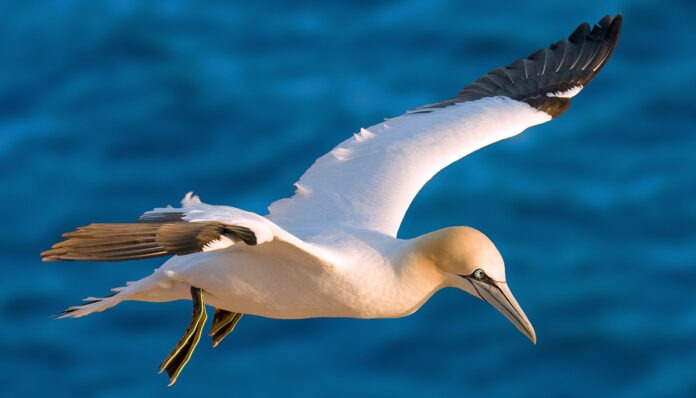MICHAEL GIVANT
Guest Writer
Givant@lbknews.com
There’s a stretch of LBK beach that I call Whit-Can, which connects Whitney Beach to Beer Can Island. This is what it looked and felt like on three different mornings.
Early morning
The sun hidden by clouds has been up for 20 minutes when my wife and I step onto the cool, firm sand of Whitney Beach. The tide is high and despite the 58-degree morning it feels warmer. The din of the lapping waves is soothing.
Above the Gulf water a sooty laughing gull chases an orange-billed royal tern but breaks off the chase when the tern keeps heading out to sea. The laugher may have taken umbrage at the royal tern invading its territory.
Down the beach is a large flock of mixed gulls, terns and various shorebirds. A sandwich tern, identifiable by the yellow tip of its black bill, lifts up a wing, moving the joint away from its body to preen itself. As we walk slowly and quietly among the flock, which isn’t disturbed by us, a ring-billed gull stands close, allowing me to look directly into its yellow eye. There’s something special about looking into the eye of a wild bird.
Nearby a tiny brown backed sandpiper gets a white morsel in its bill and quickly does a running take-off over the water. Two lithe snowy egrets are walking the water’s edge plying for fish. Snowy egrets are 24-inch herons, nicknamed “golden slippers” because they have black legs and bright yellow feet that are used to stir up fish. A third snowy with a high crest, looking as if it’s in breeding plumage, flies in. The new arrival quickly chases the others away. They stay together further down the beach. The chaser looks like a “madman” as it walks away quickly. Another territorial dispute settled.
Mid-morning
Mid-morning, a few days later, birds are feeding. There are some hungry herons in a lagoon on Beer Can Island. Standing in the water is a great blue heron whose head is tilted down toward the water with its neck crooked, patiently waiting. It can strike a fish with its javelin bill in a millisecond. Beyond it is a Louisiana heron. The bird’s gray sides, wine-colored breast and white belly, topped by a dashing streak of yellow on its long neck, make a smart looking pattern. The bird thrusts it bill swiftly and neatly into the water, coming up with a wriggling silver fish that it quickly swallows.
A herring gull is pulling on a large fish, having eaten away its middle. The lifeless head and yellow green tail flop as the gull throws its catch onto the wet sand. The gull puts the fish into its wide-open bill, attempting to swallow the whole thing. The gull’s mouth doesn’t seem big enough but the fish disappears. The fish’s colorful tail however is sticking out of the side of the gull’s bill. Now what? Within seconds the tail too has disappeared into the belly of the bird. It then twice dips its bill in the water to rinse it. The large and ungainly herring gull may not get style points for the way it eats but it gets them for cleanliness.
Northern gannets are winter visitors to Florida seen flying offshore. On Whitney beach there is a dark immature gannet coming closer to shore. Before, there were almost a dozen out where the curve of the sea meets the pale sky. Coming closer this one spells mystical power. Flying fast, it shows sharply bent wings, almost too long for its body, a tubular tail and a downward turned head, which scans the water below for fish. The bird looks more like an aircraft than a living body covered by feathers. It’s a moment to contemplate the mystery and majesty of birds.
Impending rain
A solid dark cloud on the horizon stretches as far as the eye can see, confirming the forecast for rain. There’s only a lone gull on the beach. Birds seem to know when it’s going to rain. On Beer Can Island, black skimmers fill a large portion of the sky. In bright sun their black backs, sharply bent back wings and white bellies would be dazzling. This gray morning they look dreary.
Like a rollercoaster, they fly down toward the water and rise again, doing this several times. They seem to fly to music only they can hear and human ears cannot. Two, trying to catch up to the main body, beat the air hurriedly with their long tapered wings. The skimmers can only be going to the point on the beach where they rest with other gulls and terns. But why are they going there now when it’s going to rain? I thought birds always seemed to know something about the weather. It turns out they do, as only some light drops fall.
I take off my windbreaker and walk back to where I get off the beach. The long dark curve of the ocean bends gently south to Sarasota and north to Tampa. A lone dolphin raises its dark gray body partially out of the water. Tall islands of slightly bent grass suggest they’ve endured the elements out here. This is my kind of morning; one to be out experiencing a cloud formation or feeling the wind and sun or some passing raindrops on my face. It’s a morning made to walk Whit-Can beach.

